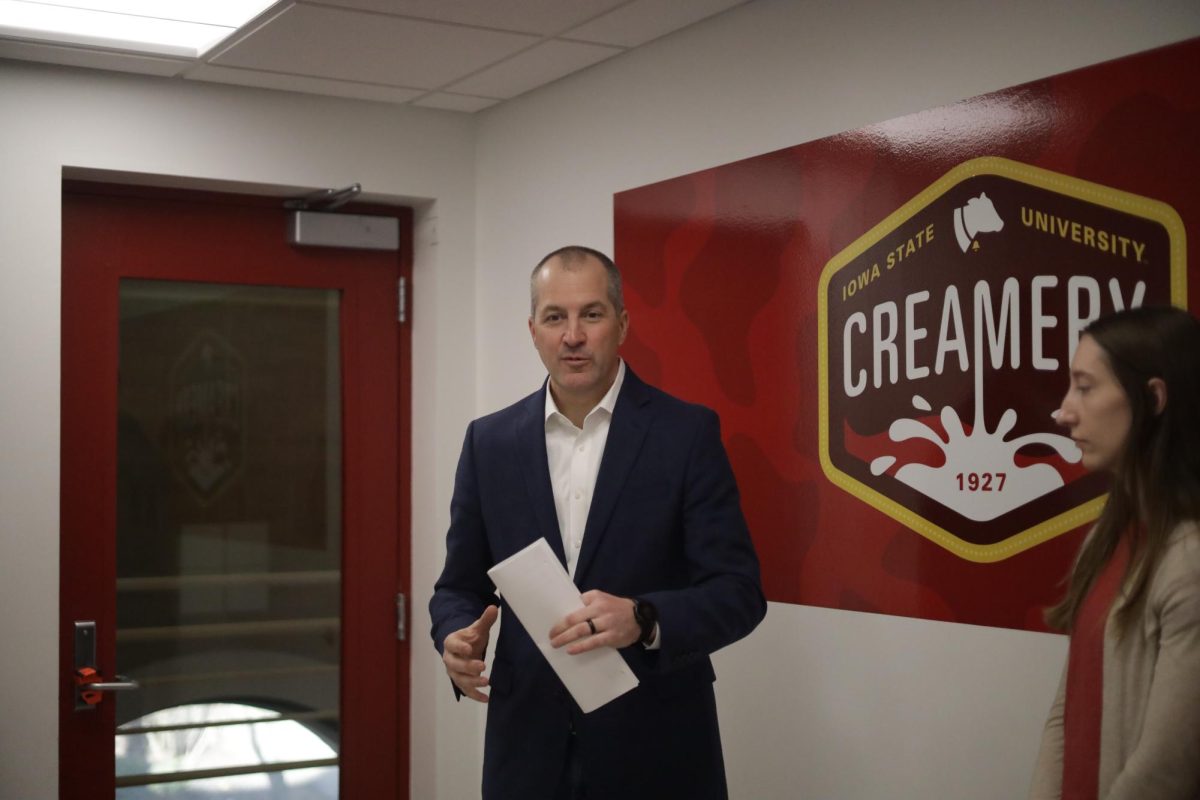City plans to stifle choo-choos
September 11, 1998
New and improved train whistles will be installed next week at three Ames locations.
The train whistles at Hazel Avenue, Scholl Road and North Dakota Avenue will be replaced by an automated horn system new to the Iowa railways.
“This is a project we’ve been working on for a year or so,” said Ames City Councilwoman Judie Hoffman, an active supporter of the bill to fund the project. “This is kind of the culmination now.”
Hoffman said the noise became a big problem when Union Pacific Railroad bought out the company that previously owned the line running through Ames.
Union Pacific increased the number of trains running on Ames railroad tracks and the decibel level at which its trains’ warning horns sound. The increased noise led city staff to look into alternative whistle systems.
“It became a greater problem [after Union Pacific took over] than it had been before,” Hoffman said. “We started looking for a solution.”
Hoffman said the automated horn system is currently running in two small towns: Parsons, Kan. and Gering, Neb. The city of Ames sent traffic engineer Scott Logan to Parsons to see how residents there felt about the system.
Logan said he was surprised to find that the automated train horns were so quiet.
“The residents said it was quite a big difference in noise,” Logan said. “Before, they couldn’t even talk in their living rooms. It made a big difference in their quality of life.”
The automated horns are different from current horns in that the sound originates from the track rather than from the train itself. Once a train is detected by sensors at a certain point on the track, the horns are triggered to send the alarm directly down the road intersecting the track.
“[The sound] can be focused on activity it’s supposed to be focused on — down the street,” said Paul Wiegand, director of Public Works.
Wiegand said the automated whistles will be 95 percent quieter than the current ones because the horns will no longer send their noise out in all directions.
Logan said the automated sound is “kind of like a muted horn.”
Hoffman said the new whistles will be just as effective as the current ones. In case of emergency, an oncoming train can still use its horn for extra warning, she said.
Logan said Parsons has actually had fewer train accidents in the two years since the automated horns were installed than in the three years preceding their installation.
“There’s not a big difference in safety,” he said.
The proposal presented to the city council last winter asked the city to look into alternate ways to alert people of oncoming trains through intersections at seven at-grade crossings in Ames. So far the council has agreed to fund three of the intersections.
“We picked the three intersections that had the most people living close by,” Hoffman said.
The city originally planned on paying about $30,000 per intersection, but at Tuesday’s meeting, the Iowa Department of Transportation announced it would assist with the project, significantly decreasing the cost for the city, Hoffman said.
“The city is paying for it, but the DOT will help do some of the underground work,” she said. “Now that it’s a little cheaper, we may decide to do it at some other intersections.”
The council’s decision to go ahead with the three new whistles was reaffirmed last week, when results from a city survey showed Ames residents supportive.
As an Ames resident who lives between two of the areas receiving the automated horns, Hoffman said “I’m looking forward to it myself. The [current] horns are very, very noisy,” she said.
Wiegand said preparatory work and the DOT’s underground installation of conduit and poles began Thursday.
Logan said installation of the whistles themselves should begin next Tuesday or Wednesday.
“We’re hoping to get these installed as soon as possible,” he said. “This project has been highly prioritized to get noise relief for residents.”
Wiegand said Public Works hopes to try out the equipment by Sept. 21 and have it fully operational by the end of the month.






